The Tortoise and the Snake.
March 21, 2016 4 Comments
While visiting the Yale University Art gallery (03/20/16) I came across a Yoruba door with four panels. The third panel showed four characters, a tortoise, a man, and a small antelope.
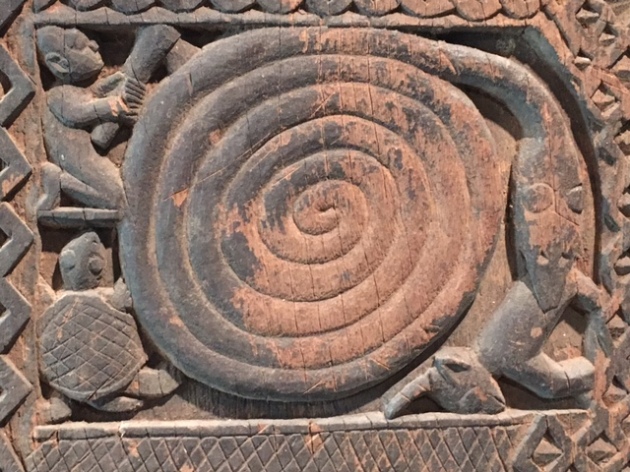
Yoruba Door – Nigeria, Ekiti, Osi Ilorin, late 19th – early 20th century (Panel #3).
I disagreed with the following description,
“… a coiled snake seizes an antelope while a small kneeling figure strikes the snake with an axe, thus representing the Yoruba proverb ‘We are all struggling’.”
With no mention of the tortoise (Ijapa – the animal trickster hero or villain who plays the role of Anansi the spider among the Ashanti, and that of the hare (Brer Rabbit in the USA) in other parts of West Africa[1]), I came up with another description,
The combination of ‘small and innocent’ will better survive ‘size and treachery’, through the combination of ‘prowess and cunning’…. or to make a long story short “idealism can only get you so far”. This panel resonates with me from a very real life perspective since while guile can easily morph into treachery there is no mistaking who lies at the bottom of the economic food chain.
This is the door in its entirety followed by the exhibit description. It shows detail, imagination, and simplicity of design combined to produce a really wonderful artistic result.
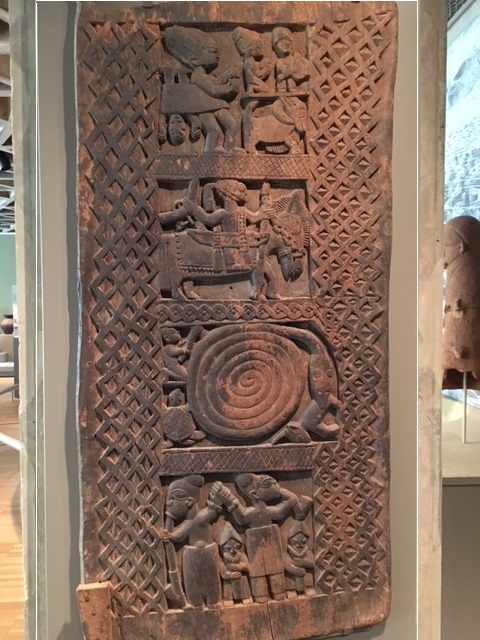
Yoruba Door – Nigeria, Ekiti, Osi Ilorin, late 19th – early 20th century (Yale Art Gallery, Leonard C. Hanna, Jr.)
For Panel #1.
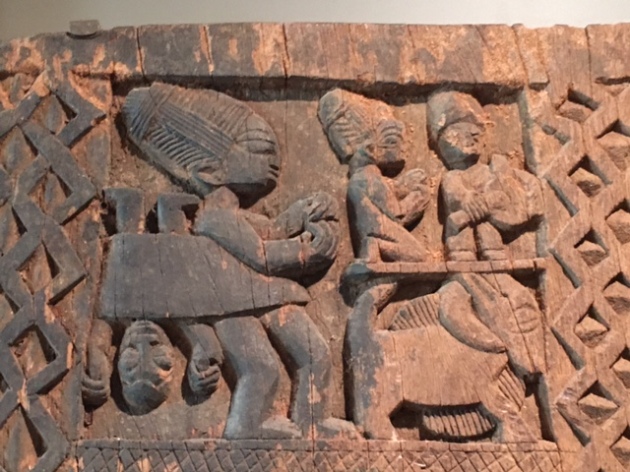
Yoruba Door – Nigeria, Ekiti, Osi Ilorin, late 19th – early 20th century (Panel #1).
“The relief on the top panel depicts a woman holding an upside-down child on her back – a reference to the unpredictable earth mother, Iya Ile. The child holds the head and tail of a snake, symbolizing Ogun, the god of Iron, who is worshipped by hunters, warriors, and blacksmiths. The woman faces a drummer, a kneeling man, and a hunting dog”.
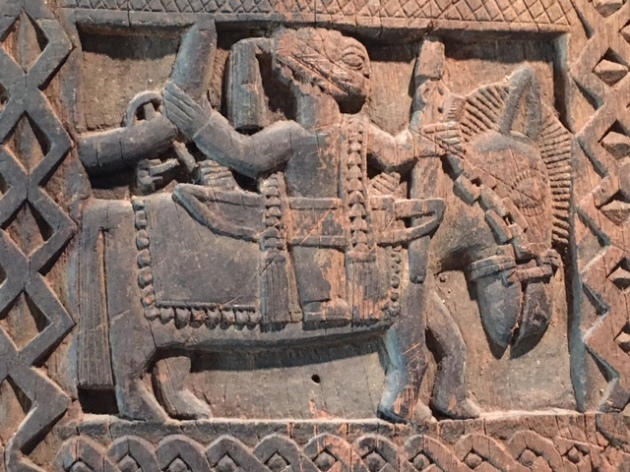
Yoruba Door – Nigeria, Ekiti, Osi Ilorin, late 19th – early 20th century (Panel #2).
“In the second panel a hunter on horseback holds a pistol and a spear”.
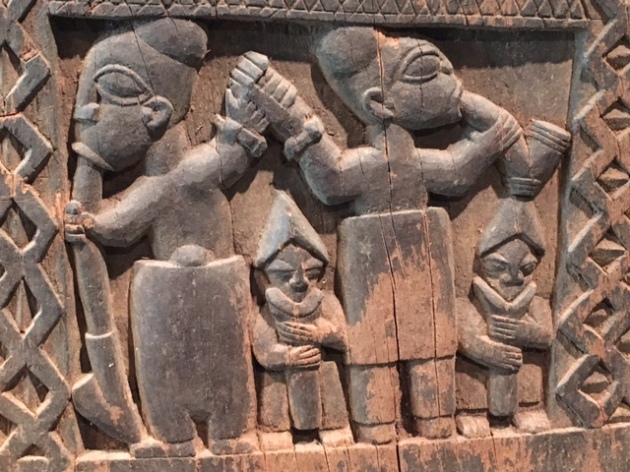
Yoruba Door – Nigeria, Ekiti, Osi Ilorin, late 19th – early 20th century (Panel #4).
“In the bottom panel, two triumphant hunters smoke pipes while being honored by two flute players”.
This piece demonstrates the multifaceted nature of African Tribal Art, which transforms the practical door into a carrier of norms, ritual thought, and value systems.
[1] Harold Courlander, A Treasury of African Folklore, 1996 pg 221.


Frankly, on too many occasions, (true) African perspectives concerning their crafts are never important – as it is a well known, documented and still engrained believed within the Western consensus that: “the African does not know his / her own primitive mind” and “he has no fixed thoughts”… Hence, part of the reason why I avoid museums like a plague. Even in the year 2016, they have relatively nothing to teach anyone in earnest about the subject of historical Africa – except their own (buffoonery) and narcissistic perspectives.
The book MAKING HISTORY; African Collectors and the Canon of African Art by Sylvester Okwunodu Ogbechie and the Femi Akinsanya gallery / collection in Lagos, Nigeria is among the most salient, scholarly, trustworthy and welcomed publication I have ever encountered. Yet, it intentionally omits grandiose descriptions and the functional details… I admire the African logic, though.
… Now, I think the door itself is a fantastic symbolic display of cultural and symbolic messaging. Yet, notwithstanding a basic education in folklore and customs – which are essentially not of much interest to many Westerners – rationale behind European nefarious word conceptual substitution; Janus, fetish, witchdoctor, etc. (LOL)
More than one culture is encoded within the symbols of this door, although it bears “Yoruba” characteristics. There were certainly shared “Nigerian” collective wisdom, folklore, and other beliefs at one time (but with unique group expressions) through the era of historical time, many things can also be determined.
Thanks for the book recommendation … I just went through a mini-symposium by the author on YouTube (pub 2013). It’s definitely a step in the right direction and it’s a necessary conversation !
Was this the link?
He starts out a bit “dry” and slow, but like a centrifuge, once his momentum occurs, wow!
I have had the pleasure in corresponding a few times (briefly) with him, and I deeply appreciated his comments about genuine Ehsu – let alone the vetting of certain objects – from those which truly know, scholarly and historical Nigerians. Not only is he of royal Yoruba lineage, he is far more scholarly and reputable than an Associate Professor. He also has much to say about Benin bronze works…
Sylvester Okwunodu Ogbechie the “royal scholar” (and Femi Akinsanya, the skilled and experienced field collecting expert) intrigue me like few others.
Thank you for this salient “The Tortoise and the Snake” post, leading to the opportunity to advance the subject respectively.
Good job on the link. The current importance placed on European developed provenance (purely a social construct) in African Tribal art undermines individual and critical appreciation of the pieces, as demonstrated by the Benin example used in the video where post 1897 pieces are relatively valued much less than pre 1897. There needs to be more balance where the contribution of Art in African collections of at least equal character is similarly valued and recognized. The idea that art which has evaded pillage and plunder is more likely to be considered fake than those pieces floating around outside of African collections will force the process of increased ‘African provenance’.